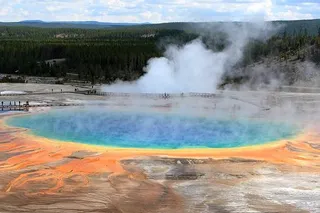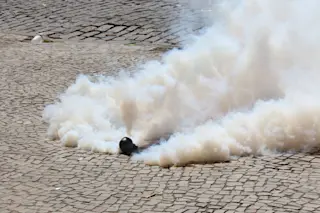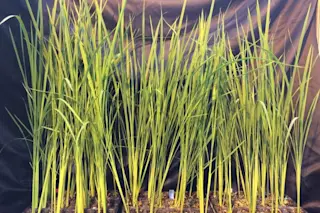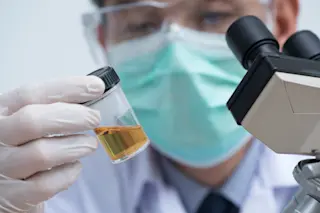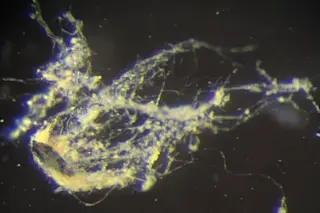If humans could hijack photosynthesis — essentially, plants’ food factory — they could, in theory, capture carbon and produce hydrogen, both potentially helpful in fighting climate change. Absorbing carbon could slow climate change, and manufacturing hydrogen efficiently could create an alternative to CO2-producing fossil fuels.
Figuring Out How to Harness Photosynthesis
Plants’ natural “factory” is both elegant and efficient: they absorb energy from the sun to process carbon dioxide and water into the sugar and oxygen that sustains them.
Although this sounds simple in theory, it’s incredibly difficult to perform in practice. Scientists have been trying for decades to recreate the process. Now, a team of researchers reports in Nature Chemistry that they have performed a crucial early step.
Why has this relatively straightforward-sounding natural process been so hard to mimic in the lab? Essentially, the biochemical machinery that powers the plant’s “plant” is quite complex. The process, which happens within plant cells, requires many steps involving multiple dyes, proteins, and other molecules.
Stacking It Up
To recreate some of those steps, the team of scientists from Korea and Germany literally took a “stacked” approach. They built four molecular “layers” of dyes that mimic those naturally occurring in plant cells. The dye stack absorbs light at one end, essentially filters it into separate charges, and then sends that energy step by step through the stack via electrons.
‘We can specifically trigger the charge transport in this structure with light and have analyzed it in detail,” Leander Ernst, a Julius-Maximilians-Universität (JMU) Würzburg grad student and co-author of the study, said in a press release. “It is efficient and fast. This is an important step towards the development of artificial photosynthesis.”
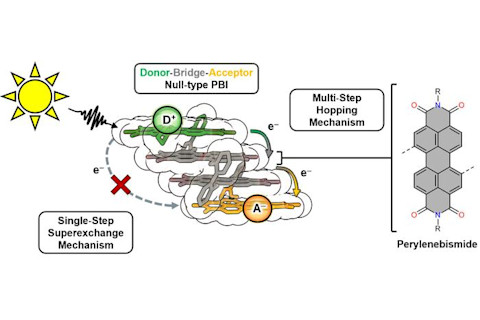
This is what the stack of four dyes synthesized in Würzburg looks like. It represents a further step towards artificial photosynthesis because it absorbs light energy and transfers it quickly and efficiently in the stack. (Image Credit: Leander Ernst / University of Wuerzburg)
Leander Ernst / University of Wuerzburg
Taking It Higher
So, what’s the next step? The researchers intend to expand the “nanosystem” of stacked dye molecules, like adding more floors to a skyscraper. The hope is that building the stack molecule by molecule (after, of course, identifying and synthesizing each one) will eventually create a “supramolecular wire”. This carefully constructed tower of molecules could, theoretically, absorb light energy and move it quickly and efficiently over longer distances.
A complex stack of the right molecules, layered correctly, could ultimately mimic what plants do so naturally.
Read More: How Does Photosynthesis Work?
Article Sources
Our writers at Discovermagazine.com use peer-reviewed studies and high-quality sources for our articles, and our editors review for scientific accuracy and editorial standards. Review the sources used below for this article:
Nature Chemistry. Photoinduced stepwise charge hopping in π-stacked perylene bisimide donor–bridge–acceptor arrays
Discover Magazine. How Does Photosynthesis Work?
Discover Magazine. Will we ever... photosynthesise like plants?



